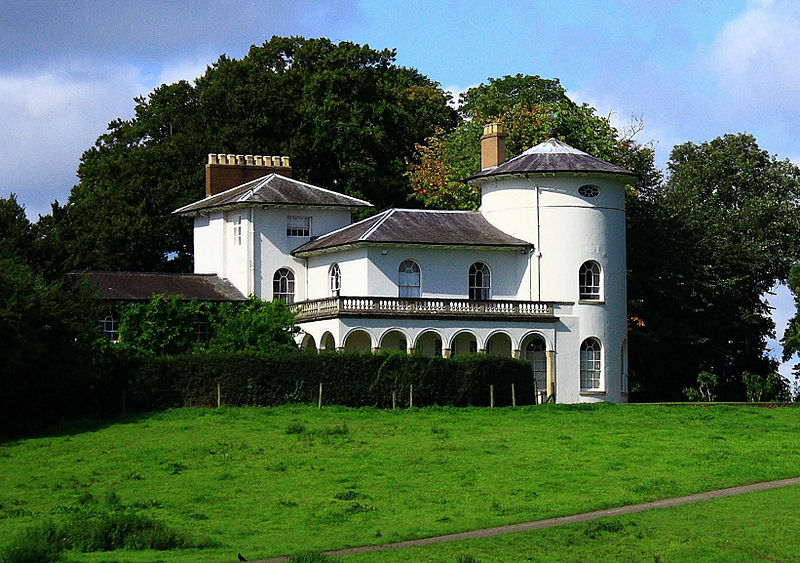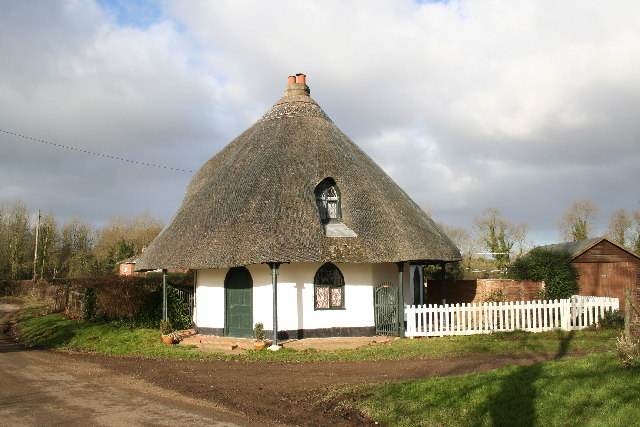Picturesque movement

|
| Cronkhill is an example of the Italianate style associated with the picturesque movement. The country home was built by John Nash in 1802. |
Contents |
[edit] Introduction
This picturesque artistic movement was initially associated with Claude Lorrain and Gaspard Dughet (sometimes referred to as Gaspar Poussin due to his association with Nicholas Poussin, who briefly served as his teacher). These two French artists worked in the 1600s and are known for their bucolic landscape paintings that sometimes featured imagined buildings in various architectural revival styles.
Eventually the term picturesque came to be associated with a British aesthetic ideal that was represented by architecture that looked as though it had emerged from a landscape painting that had been completed by one of these two artists.
[edit] Evolution as an architectural style
William Gilpin (4 June 1724 – 5 April 1804) is considered to be one of the creators of the picturesque ideal. In 1768, Gilpin’s 'Essay on Prints' introduced the definition of picturesque as 'a term expressive of that peculiar kind of beauty, which is agreeable in a picture'.
This idea was further advanced in his 1782 book, 'Observations on the River Wye, and Several Parts of South Wales, etc. Relative Chiefly to Picturesque Beauty' which was a practical handbook of the picturesque concept. As an aesthetic, picturesque became associated with an ideal or quality that existed somewhere between ‘the sublime and the beautiful’.
Gilpin’s ideal was eventually shaped into comprehensive theories associated with landscape design and architecture. This work was realised in structures that had unconventional asymmetrical forms with varied scale and texture.
[edit] Examples of picturesque
The picturesque style was promoted as an appropriate design for rural settings, with its complex and irregular shapes and forms fitting well into the natural landscape. The Italianate country houses of the architect John Nash represent one aspect of the picturesque style. As a the leading architect of the Regency style, Nash was known for his departure from classical revival through his more fanciful interpretation of the Regency style.

|
| The octagonal Cottage Orne with overhanging eaves, in Langton by Partney. (Cottage Ornee cc-by-sa/2.0 - © Richard Croft - geograph.org.uk/p/112891) |
At the other end of the spectrum was the Cottage Orne, a rustic and modest dwelling often featuring roughly hewn wooden columns and a thatched roof. These cottages for the wealthier classes often served little purpose other than to decorate the estate, but they were sometimes used as personal retreats.
Nash built an entire village of these cottages at Blaise Hamlet. Nash worked on the project on behalf of a Bristol banker who wanted to provide homes for retired members of his staff.
[edit] Related articles on Designing Buildings Wiki
Featured articles and news
RTPI leader to become new CIOB Chief Executive Officer
Dr Victoria Hills MRTPI, FICE to take over after Caroline Gumble’s departure.
Social and affordable housing, a long term plan for delivery
The “Delivering a Decade of Renewal for Social and Affordable Housing” strategy sets out future path.
A change to adoptive architecture
Effects of global weather warming on architectural detailing, material choice and human interaction.
The proposed publicly owned and backed subsidiary of Homes England, to facilitate new homes.
How big is the problem and what can we do to mitigate the effects?
Overheating guidance and tools for building designers
A number of cool guides to help with the heat.
The UK's Modern Industrial Strategy: A 10 year plan
Previous consultation criticism, current key elements and general support with some persisting reservations.
Building Safety Regulator reforms
New roles, new staff and a new fast track service pave the way for a single construction regulator.
Architectural Technologist CPDs and Communications
CIAT CPD… and how you can do it!
Cooling centres and cool spaces
Managing extreme heat in cities by directing the public to places for heat stress relief and water sources.
Winter gardens: A brief history and warm variations
Extending the season with glass in different forms and terms.
Restoring Great Yarmouth's Winter Gardens
Transforming one of the least sustainable constructions imaginable.
Construction Skills Mission Board launch sector drive
Newly formed government and industry collaboration set strategy for recruiting an additional 100,000 construction workers a year.
New Architects Code comes into effect in September 2025
ARB Architects Code of Conduct and Practice available with ongoing consultation regarding guidance.
Welsh Skills Body (Medr) launches ambitious plan
The new skills body brings together funding and regulation of tertiary education and research for the devolved nation.
Paul Gandy FCIOB announced as next CIOB President
Former Tilbury Douglas CEO takes helm.
UK Infrastructure: A 10 Year Strategy. In brief with reactions
With the National Infrastructure and Service Transformation Authority (NISTA).























Comments
You need to look at the work of Lutyens Cleveleys Garden Village.